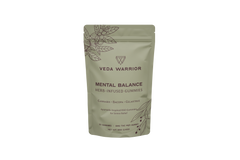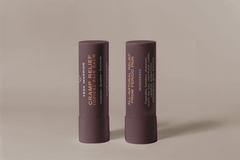Healing Through Sound in the Ayurvedic Tradition
In a world increasingly captivated by sound baths, binaural beats, and solfeggio frequencies, one of the oldest and most powerful sound healing modalities remains surprisingly underexplored in the West: Raga music. Originating thousands of years ago in the Indian subcontinent, Raga music is not merely an art form, but a spiritual science grounded in mathematical precision, emotional intelligence, and energetic alignment.
At the heart of this tradition is a profound truth recognized by the ancient sages of India: sound is medicine.
What is Raga?
The word "Raga" comes from the Sanskrit root ranj, meaning "to color" or "to dye." A Raga is often translated as a "melodic framework," but that definition fails to capture the depth of its design. Each Raga is a specific sequence of notes (swaras) organized to evoke a particular emotional state or energetic effect. But unlike Western scales, Ragas are not just scales—they are living, breathing musical organisms.
Each Raga is built on a specific set of rules: the time of day it should be played, its ascending and descending note patterns, the emotional flavor (rasa) it should evoke, and even which notes are to be emphasized or approached delicately. Some Ragas are uplifting and energizing, others are calming and meditative. Some evoke romance, while others express sorrow or devotion. But all Ragas share one goal: to tune the human mind and body back to its natural, harmonious rhythm.
Raga and Ayurveda: The Connection
Ayurveda, the ancient Indian system of holistic medicine, teaches that health is a state of balance among the three doshas (Vata, Pitta, and Kapha), which represent different elemental energies in the body and mind. Raga music has historically been used within Ayurveda as a tool to rebalance these energies, restore emotional harmony, and heal both psychological and physiological conditions.
In the Ayurvedic model, disease is often rooted in dissonance—an imbalance in the internal vibratory field. Raga music works by reintroducing coherence into the system. Each Raga acts like a tuning fork, resonating with different organs, energy centers (chakras), and even times of day, to bring the body back into equilibrium.
For example:
-
Raga Darbari Kanada, with its deep, solemn tones, is used for insomnia and anxiety.
-
Raga Bhairavi is considered deeply purifying and often played at dawn to clear emotional stagnation.
-
Raga Hamsadhwani, light and joyful, is known to elevate mood and ease depression.
The Mathematics of Healing
Far from being just expressive improvisation, Raga music is mathematically precise. The structure of each Raga follows strict rules—similar to how specific combinations of chemical compounds result in precise therapeutic effects. Ragas utilize a microtonal scale with 22 intervals (shruti) instead of the 12-tone scale common in Western music. This allows for infinitely more nuanced emotional expression, which is why listeners often find Raga music so hauntingly evocative.
Modern research is beginning to catch up with what the ancient rishis already knew. Studies have shown that Indian classical music can:
-
Lower cortisol levels and reduce stress
-
Slow heart rate and respiration
-
Improve cognitive function and focus
-
Increase emotional regulation and resilience
In 2015, a study published in the Journal of Clinical Psychology found that listening to specific Ragas could reduce symptoms of depression. In another experiment, Raga music was shown to decrease systolic blood pressure, supporting its use for cardiovascular health.
The Sonic Ritual at Summer Solstice
At our Summer Solstice celebration, we invite guests into a Raga immersion experience designed to attune their bodies and minds to ancient frequencies of healing. This is not a concert in the typical Western sense. It is a sound ritual.
Beginning with an ambient DJ set by Joey Greiner that gently opens the energetic field, the journey crescendos into a live Raga performance curated by Rasa Sounds—a collective of classically trained musicians who are preserving the sacred science of Raga for the modern age.
Each melodic phrase is chosen with intention. Each rhythm cycles through tala patterns that mirror cosmic time cycles. The music is improvised but within a precise framework, allowing it to meet the mood of the moment while still adhering to ancient parameters that guide its therapeutic effect.
This performance is not just to entertain—it is to transform.
Why You Feel It In Your Body
When people first encounter Raga music, they often describe a sensation of being transported, of emotions rising to the surface unexpectedly, or of feeling deeply soothed in places words can’t reach. This is the power of vibrational medicine. The frequencies of each Raga bypass the thinking mind and go directly into the pranic body—the subtle energy field that Ayurveda sees as the blueprint for health.
You might find yourself breathing slower. You may feel your thoughts quiet. Or you may cry. All of this is welcome. Raga music works not only on the physical body, but on the emotional and spiritual layers of the self.
Raga and the Future of Wellness
As integrative health continues to grow, sound is becoming an increasingly recognized modality for healing. From sound bowls in yoga studios to the emergence of biofield tuning and vibroacoustic therapy, modern science is beginning to echo what ancient wisdom traditions have long taught: frequency heals.
In this space, Raga offers a unique contribution. It is not just a new wellness trend but a time-tested tradition with spiritual depth, artistic brilliance, and therapeutic potential.
As Veda Warrior continues to explore the intersections of ancient medicine and modern healing, we are honored to bring Raga back into the spotlight—not just as a beautiful music form, but as a tool for transformation.
So next time you find yourself sitting quietly, listening to the winding, intricate melodies of a Raga, remember: this is not just music. This is medicine.





